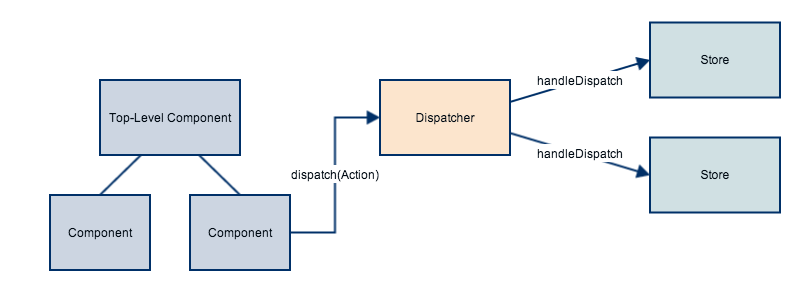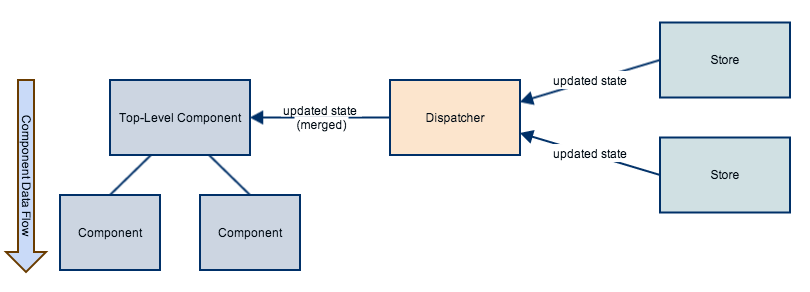BinaryMuse / Imgsible
Programming Languages
Imgsible
Imgsible is an image upload and sharing site in the spirit of the excellent image sharing site Imgur built to demonstrate building a non-trivial isomorphic application with React.
Check out the demo on YouTube.
Running
Prerequisites:
- Node.js
- Redis
- GraphicsMagick
On OS X, these are all available via Homebrew.
Once you have satisfied the prerequisites, you can install and start the application. Clone the app, and from its directory run:
npm install-
redis-server conf/redis.development.conf(in another console, or in the background) npm start
The client bundle will automatically build and the web server will start. Use the PORT environment variable if you want to specify the port the HTTP server binds to.
Architecture
Note: This is in no way the ideal architecture. It has some drawbacks; see the "Pros" and "Cons" sections, below, for details. It does, however, solve some of my problems, so here it is. :)
When a view needs to update the application-level state--for instance, when the user interacts with the UI--it uses the Dispatcher. The dispatcher is an object that references one or more Stores and dispatches Actions to each of them.
Stores are added to the Dispatcher via its register method. The Store must implement a handleDispatch method, taking type and data parameters, to handle Actions dispatched from the Dispatcher. handleDispatch must return the portion of the application state that the Store manages (or a promise of that state if the handler is asynchronous).
Actions are dispatched via the Dispatcher's dispatch method. A set of objects--normally one per Store--provide methods to generate Actions. An Action's type simply identifies it, providing a way for Stores to determine if they care about the Action; an Action's data can be anything.
Once every piece of state has been resolved from the promises returned from the Stores' handleDispatch methods, they are merged together to form the object that will be passed to React's setState method. In addition, the dispatch method returns a promise of this merged state--this is mostly useful on the server, where you must know when the state is ready so you can call renderComponentToString.
function ImageStore() {}
ImageStore.prototype.handleDispatch = function(type, data) {
// ...
return myStateOrAPromiseOfMyState;
};
var dispatcher = new Dispatcher();
dispatcher.register(new ImageStore());
dispatcher.register(someOtherStore);
var statePromise = dispatcher.dispatch(ImageActions.loadImage(imageId));
statePromise.then(function(state) {
console.log('The new state will be:', state);
});
The Dispatcher is an EventEmitter; the top-level React component for an application can listen for the stateUpdate event which is emitted when the promises for an Action are resolved, and provides the same data as the promise returned from dispatch.
Once the top-level component calls setState, the updated state flows downward to child components, none of which have access to the Stores directly. Since there is a period of time between a view dispatching an Action and that Action resulting in a new state being emitted, it's important that components are able to render in the absence of that state. For example, the ImageView component shows a loading message if it doesn't yet have its image data.
Accessing the Dispatcher
A React mixin called DispatcherMixin is used to provide a dispatch property on each component it is included in. For it to work, the very top-level component that includes the mixin must have a dispatcher property that references a Dispatcher. All child components that include the mixin will receive the property automatically, and do not need to have a property referencing the Dispatcher.
Server Rendering
On the server, we set up the Stores so that they use a server-appropriate strategy for responding to events. When a request comes in for a particular URL, we trigger the appropriate Actions for that page and collect the promises returned. When they are all resolved, we render the top-level component as a string and pass in the merged state as a property.
Additionally, the merged state is provided to the client via a property on window so that the client-app can boot with the same data. This gives us server rendering of the application with a transparent upgrade to a fully functional front-end React app when the JavaScript loads.
Pros
- Components don't have to know about the Stores at all--they are coupled only by the state that the Stores generate.
- Data flow is still top-down and one-directional from the components perspective. A request for change goes out to the Dispatcher and the new state flows in to the top-level component to flow down to children. Components do not reference stores at all.
- Stores can easily be passed parameters to change their behavior on the client and server. For example, the
ImageStoretakes anImageDbas a parameter. The server version uses Redis, while the client version makes XHR requests. They otherwise have the same API and use promises, so the Store need not know the difference. Adding new features that work on both the client and the server is surprisingly painless.
Cons
- The state emitted by a Store and the components that use that state are tightly coupled. There should probably be an intermediate layer that converts arbitrary data from stores into state usable by React.
- Stores cannot use information from one another. For example, one Action tells the
RouteStoreto update therouteportion of the state, while a separate Action tells theImageStoreto load the image data for a given image. There is no way for theRouteStoreto use some of the image data--say, the title--to update a portion of its state. Ideally, dependencies could be set up between the stores, which would also remove the need to fire multiple Actions to get the UI in a certain state. - The Dispatcher can potentially get a bit confused if multiple Actions are dispatched very close together and one of the Stores is slow to resolve its promise. The race condition caused by the ordering of the promises being resolved can end up setting state that is not accurate. In practice (so far) this isn't a huge issue because most Actions only affect one store and long-running asynchronous actions tend to be relatively far apart.
- It's difficult for Stores to push data to the UI when their state changes asynchronously--for example, an Action that starts a file upload returns a single promise, but it may be useful to provide multiple UI updates as the upload progresses. Currently, the Dispatcher has a method called
refreshStatethat callsgetStateon each Store and merges them together, but this is not a great long-term solution. - I'm not a huge fan of the way Actions are currently generated. In particular, converting the arguments into an object and then passing that object to the Stores'
handleDispatchmethods is error prone; passing them as arguments all the way down the chain (usinghandleDispatch.apply) would likely be better. - On the server, we must dispatch the right Actions to get the stores in a proper state. Ideally, we could provide a mechanism to preload the stores on the server without dispatching any Actions. This would probably require decoupling the Stores and the state (as mentioned above).
See this pull request for progress on an architecture overhaul that should help alleviate these issues.
But what about...
- Why not use react-async and react-router-component? One of my goals with this app was to determine how complicated things like routing and asynchronous data loading were, so I built them by hand. The aforementioned libraries, as well as many others, are great resources.
-
Why is routing handled by a Store? I thought it would be interesting to see how it would look if the
routeportion of the application state was handled by a Store like any other piece of the state.



